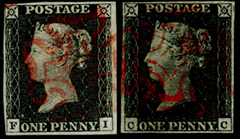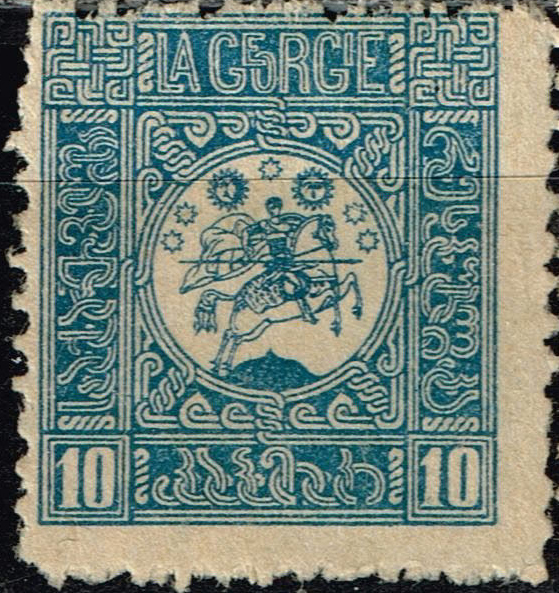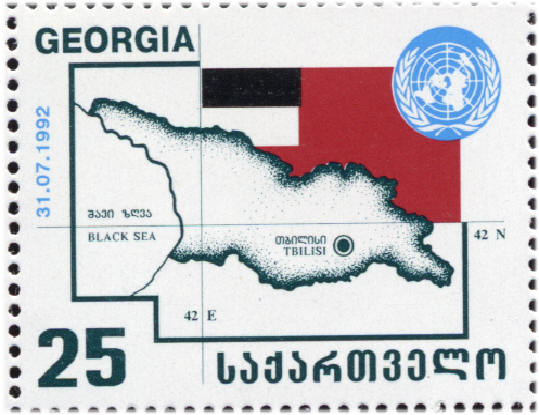 First Issues Collectors Club
of stamps and philatelic material
First Issues Collectors Club
of stamps and philatelic material
Home - Catalog - Categories - Index - Journal - Exhibits - Auctions - Forgeries - Join
 First Issues Collectors Club
of stamps and philatelic material
First Issues Collectors Club
of stamps and philatelic material
Home - Catalog - Categories - Index - Journal - Exhibits - Auctions - Forgeries - Join
| first issues > countries > georgia |
| Europe | 42 |
 |
 |
||
| Georgia Sc12 | Sc17 | xxx |
perf 11½ and imperf, no wmk, lithographed
Printed at the State Printing Works, Tiflis.
| Description | Design | Scott# | SG# † | Mi# | Y&T# ‡ | |||
|---|---|---|---|---|---|---|---|---|
| Perf 11½ | imperf | Perf 11½ | imperf | perf/imperf | ||||
| 10 kopecks blue | 1 | 1 | 7 | 5 | 4 | |||
| 40k red orange | 1 | 2 | 8 | 6 | 1 | 5 | ||
| 50k emerald | 1 | 3 | 9 | 12 | 6 | |||
| 60k red | 1 | 4 | 10 | 7 | 2 | 7 | ||
| 70k claret | 1 | 5 | 11 | 8 | 3 | 8 | ||
| 1 ruble orange brown | 2 | 6 | 12 | 9 | 4 | 9 | ||
† Gibbons [1] lists SG1-4 as imperf, issue date May 1919 and SG5-9 as perf 11½, issued in July. SG1-9 are specified as "white paper, colourless gum" and there are subsequent issues, SG10-18, from August 1919 to 1920 on "grey paper, yellowish gum" perf 11½ or imperf.
‡ Yvert & Tellier [2] simply describes the first issue as "dentelés ou non dentelés".
Georgia is described by Wikipedia as, a country located on the junction of Eastern Europe and West Asia and generally considered to be part of Europe. Nestled between the Greater Caucasus and Lesser Caucasus mountain ranges, it is bounded to the west by the Black Sea, to the north and northeast by Russia, to the south by Turkey and Armenia, and to the southeast by Azerbaijan. The capital and largest city is Tbilisi. Georgia is a unitary, semi-presidential republic, with the government elected through a representative democracy.”
| Europe | 42a |
Changes of Administration
 |
 |
 |
Soviet Republic |
TFR issues for Georgia |
Independence |
| 1922 Sc26 SG28 | 1922 Sc-B1 SG33 | 1993 Sc73 SG58 |
Georgia's story is remarkably similar to those of Armenia and Azerbaijan: historic independence; gradual acquisition by various combinations of Russia / Turkey / Persia; renewed independence as a Republic in 1919 following the Russian Revolution; within a few years becoming a Soviet Republic and then; joining the aforementioned in 1922 to form the Transcaucasian Federation of Soviet Republics; being subsumed into the USSR in 1923; becoming independent again when Russia disintegrated in the 1990s.
Within the TFR, stamps at first continued to be issued for its contituents, followed by general issues. The stamp chosen by Gibbons for the first TFR is a charity surcharge stamp for famine relief, the original not being issued because it was of too low a value at a time of inflation. Scott notes that these stamps were not issued imperforate, although there are many such for sale online.
Link: Breakup of the USSR